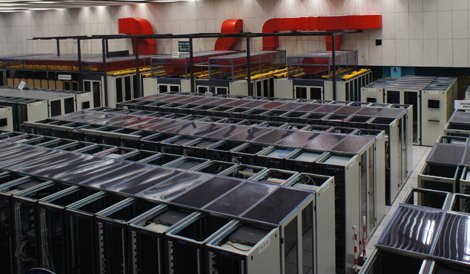CERN – the Organization for Nuclear Research – has inaugurated its new data center in Budapest, Hungry, which extends its computing resources held at its headquarters on the French/Swiss border.
The data center has been built with the Wigner Research Center for Physics and already offers 500 servers, 5.5 Petabytes of storage and 20,000 computing cores to CERN’s compute capacity.
In February this year, 100Gbps circuits connecting the two sites were lit up, allowing CERN to not only transfer data but remotely manage its facility.
The ATLAS experiment closed down this year to allow engineering work to be carried out, but the amounts processed at the facility are expected to rise once it restarts in 2015, according to CERN director-general Rolf Heuer.
“Hosting computing equipment at the Wigner Centre to extend CERN’s data center Tier 0 capabilities is essential for dealing with this expected increase, and to the success of our physics program,” Heuer said.
“The remote capacity will also contribute to business continuity for the critical systems in case of a major issue on CERN’s site.”
CERN operates its data centers in Tiers, but these are different to the Uptime I institute certifications many data center operators are familiar with. For CERN, its main data center is Tier 0, Wigner adds to this. Data is then fed out to 11 other research organizations – Tier 1 – which offer the second level of redundancy and processing.
In total, Wigner is expected to distribute, analyze and store 25 petabytes of data a year for CERN, which runs the large Hadron Collider – an experiment used by more than 3,000 scientists around the world.
Earlier this year, CERN hit the 100 petabyte mark for the amount of data it had stored in its mass storage systems.
You can read more about how CERN carries out its computing in our two-part article here.

